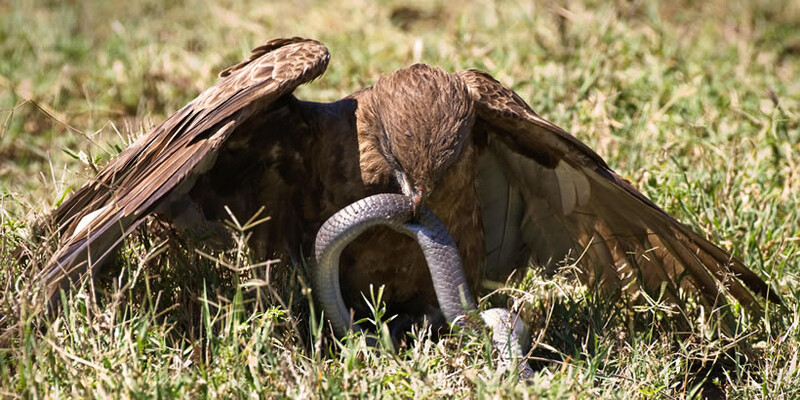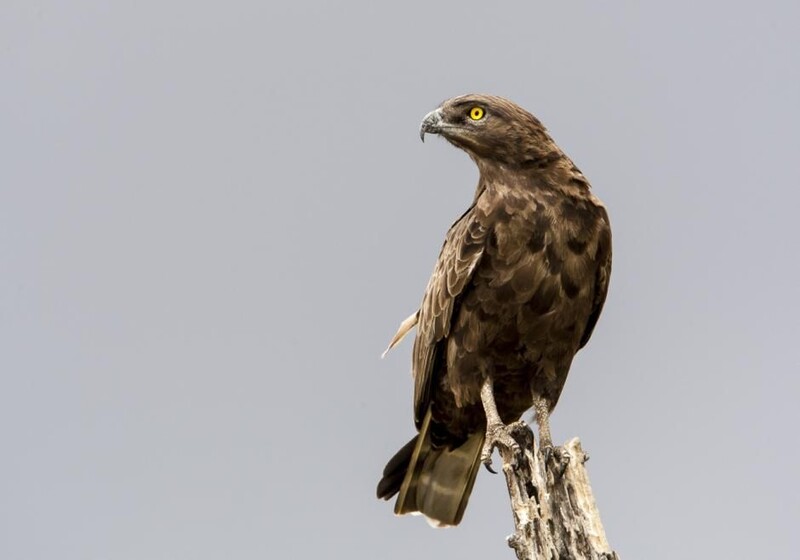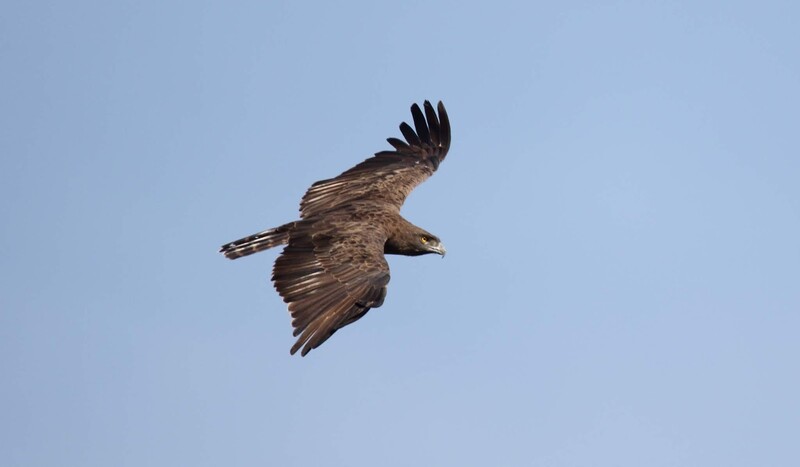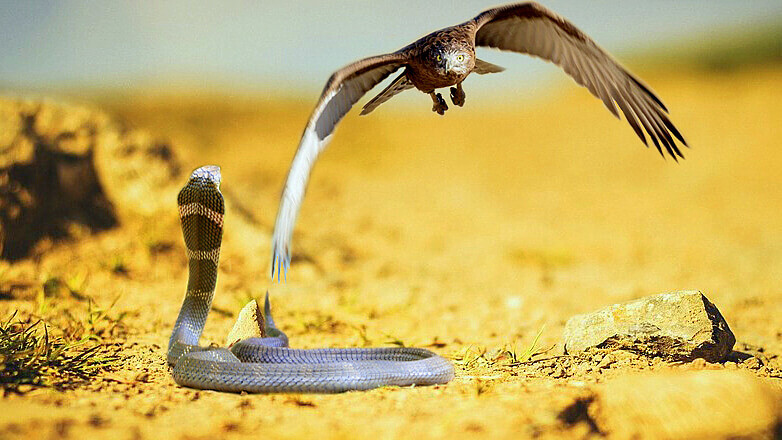Distribution
Brown snake-eating eagles are commonly found in the African region including West, East and South Africa.

Habitat
This bird of prey mainly inhabits open forests and savannas, dry forests with tall trees.

Describe
Basically their plumage is dark brown, with slight speckles on the wings. Purple will appear on the feathers when under certain lighting conditions. The underparts of the wings are silvery-white, contrasting with its brown plumage.
The brown snake-eating eagle is upright with a large head, sharp black curved beak, yellow eyes, short tail, and yellow bare feet. Both sexes are similar, but the female will usually be slightly larger than the male, about 5%.
This species of eagle has a body length from 66 to 78 cm, the average weight ranges from 1.5 to 2.5 kg. The average wingspan is 160–185 cm, with some reaching up to 200 cm in length.
They are larger and stronger than other snake eagles, so the snakes they catch will also be larger, and regardless of whether the snake is harmless or venomous.
Like other snake eaters in their subfamily, brown snake eagles also have a natural defense against bites, with thick legs.
Hunt
When hunting, they often perch on a treetop or rocky snout, where they can best see, these times they are almost motionless. They spend much of the day perched on trees, and move from tree to tree over short distances.
The brown snake-eating eagle seems to be an avid hunter of snakes, whose prey is often dropped to the ground and killed on the ground.

Like most snake eagles, when caught, they will swallow the snake whole. However, with snakes that are too big, they will use their curved beaks to rip off their prey, but this is rare.

In addition to snakes, this eagle also eats lizards, toads, ground birds and some other small mammals.
Reproduction
Brown snake eagles are solitary, even during the breeding season, they are rarely found together. Breeding season varies from place to place, but is usually from November to July of the following year.
Nests are mainly made on trees and are relatively small, with a length of only about 60-70 cm. The mother bird lays a single egg and incubates it for about 50 days. During this time the male is responsible for bringing back the food.
After 95 to 112 days of age, young birds begin to leave the nest, and become fully independent about 1 week to 2 months later.
Conservation status
Brown snake-eating eagles are quite rare and may have declined in numbers in some areas, but they still exist in a wide range. So according to the Encyclopedia of Life, they are considered species of least concern (Stable)

Longevity
Brown snake-eating eagles have a relatively short lifespan, only about 7 to 10 years.











